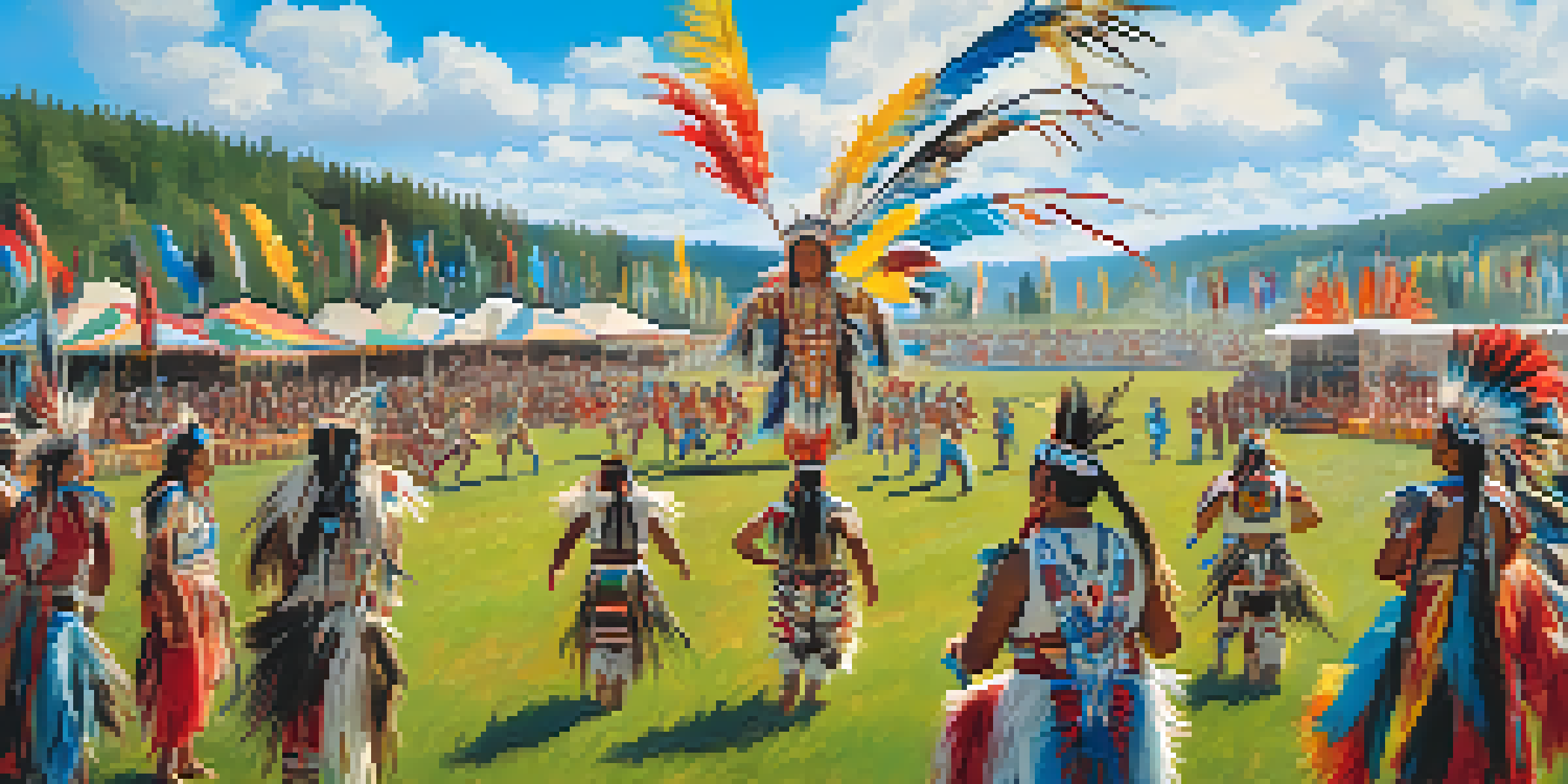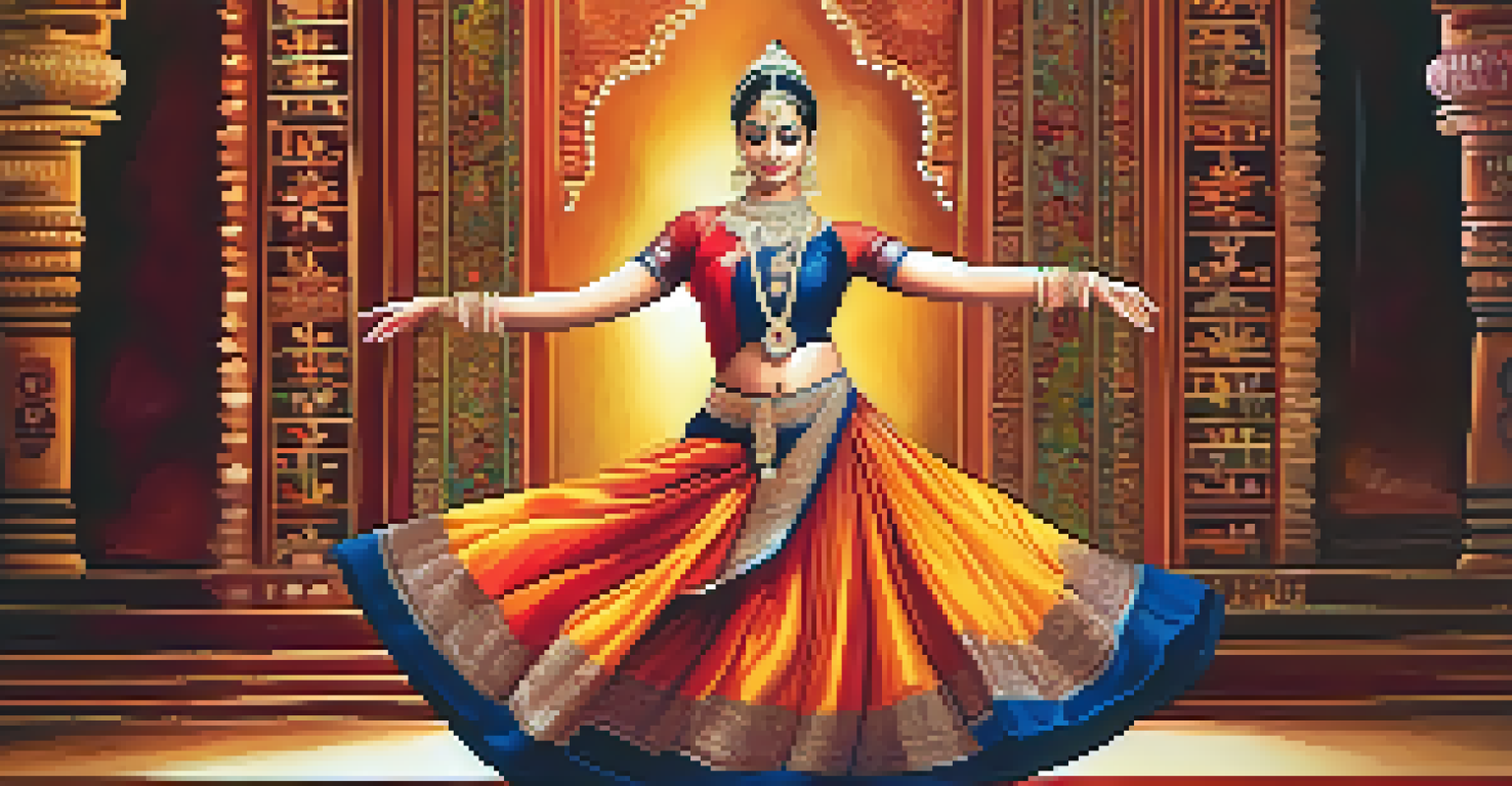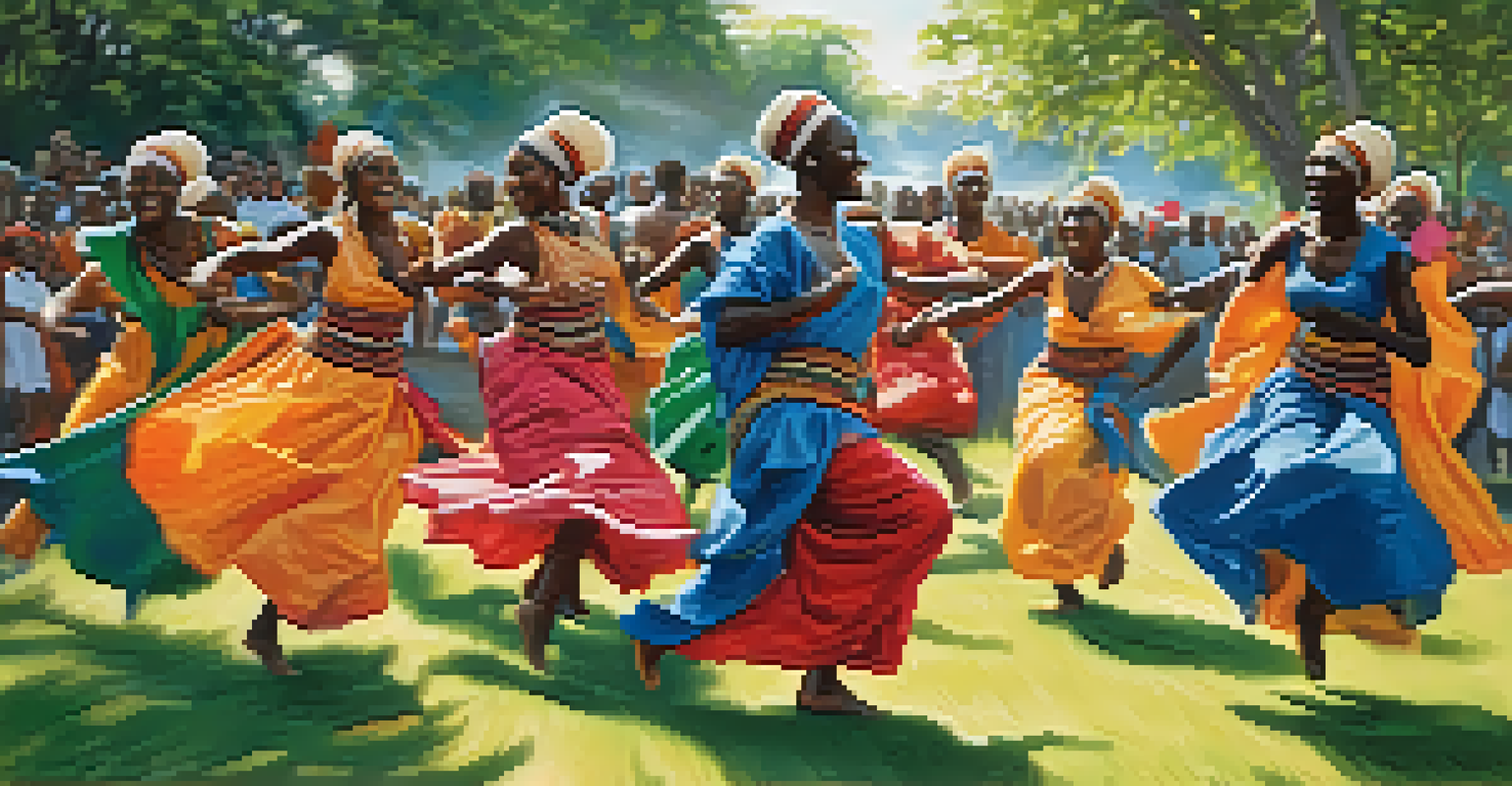Dance in Ancient Cultures: A Historical Perspective

The Role of Dance in Ancient Societies
Dance has played a crucial role in ancient societies, serving as a means of communication, expression, and community bonding. In many cultures, it was a way to convey stories, celebrate events, and honor deities. Through rhythmic movements and music, people could express emotions and share experiences, creating a sense of unity among participants.
Dance is the hidden language of the soul.
For instance, in ancient Egypt, dance was often performed in religious ceremonies to honor gods like Osiris and Isis. These performances were not just entertainment; they were deeply spiritual experiences that connected the community with the divine. Similarly, in ancient Greece, dance was integral to theatrical performances, enhancing storytelling and engaging audiences.
Overall, dance served as a powerful social glue, reinforcing cultural identities and traditions. It allowed individuals to come together, share their heritage, and pass down stories from generation to generation.
Ritualistic Dance: A Spiritual Connection
Ritualistic dance is one of the most profound expressions of human spirituality found in ancient cultures. These dances were often performed during significant life events such as births, marriages, and funerals, reflecting the community's beliefs and values. They served as a way to invoke spiritual presence and guidance during these pivotal moments.

For example, Native American tribes practiced various ceremonial dances to honor nature and seek blessings for bountiful harvests. The Powwow, with its vibrant displays of regalia and dance, showcases the rich traditions and spiritual connections of Indigenous peoples. Each movement in these dances carries meaning, creating a tapestry of cultural significance.
Dance as Cultural Expression
Dance has historically served as a means of communication, storytelling, and community bonding across various ancient societies.
Through ritualistic dance, individuals could express their deepest emotions and connect with a higher power. This sacred practice not only honored the past but also provided comfort and hope for the future, reinforcing the community's spiritual beliefs.
Dance as a Form of Storytelling
Throughout history, dance has been a captivating form of storytelling, allowing cultures to convey narratives through movement. In ancient societies, dance was often used to depict historical events, myths, and legends, making them accessible and engaging for audiences. This art form transformed complex tales into visual experiences that resonated deeply with participants.
Dance is the joy of movement and the heart of life.
Take, for instance, the traditional Indian dance forms like Bharatanatyam, which illustrate stories from Hindu epics such as the Ramayana and Mahabharata. Each gesture and expression tells a part of the story, inviting viewers to immerse themselves in the narrative. Similarly, African dance often embodies community histories and ancestral tales, preserving the past for future generations.
By employing dance as a storytelling medium, cultures could preserve their histories and share them in an engaging way. It allowed for the passing of knowledge and wisdom, ensuring that the essence of their heritage lived on through generations.
Influence of Dance on Ancient Music
The symbiotic relationship between dance and music is evident in ancient cultures, where rhythm and movement went hand in hand. Music often inspired the creation of specific dance styles, while dance provided a lively context for musical expression. This interplay not only enriched cultural experiences but also fostered artistic collaboration across various forms of art.
In ancient Rome, for example, dance was accompanied by music during public festivals, creating an electrifying atmosphere that captivated audiences. Musicians would compose pieces specifically designed to enhance the movements of dancers, showcasing the intricate connection between the two art forms. Each performance became a celebration of both sound and motion, inviting spectators to engage fully.
Rituals Connect to Spirituality
Ritualistic dance in ancient cultures reflected community beliefs and provided a connection to the spiritual realm during significant life events.
This influential relationship between dance and music continues to shape artistic expressions today, reminding us of the rich legacy of our ancestors. The rhythmic beats of ancient times echo in modern performances, illustrating the timeless appeal of combining these two powerful forms of expression.
Cultural Variations in Dance Practices
Dance practices varied significantly across ancient cultures, each with unique styles, movements, and meanings. These variations reflect the diverse histories, environments, and social structures of different societies. From the elegant court dances of the Renaissance to the lively folk dances of rural communities, each form tells a story of its cultural context.
In Asia, traditional dances like the Chinese Lion Dance represent good fortune and warding off evil spirits, while in Africa, the energetic Adamu Orisha Play combines dance with storytelling to honor deities. These cultural expressions serve not only as entertainment but also as a means of preserving and celebrating identity and heritage.
By exploring these cultural variations, we gain insight into the values and beliefs of ancient peoples. Each dance form is a testament to the creativity and adaptability of human expression, showcasing the richness of our global heritage.
Ancient Dance and Its Influence on Modern Culture
The legacy of ancient dance continues to influence modern culture, shaping contemporary art forms and performance styles. Today, many dance genres draw inspiration from historical practices, blending traditional elements with modern techniques. This fusion not only honors the past but also allows for innovation in artistic expression.
For instance, ballet, with its roots in Renaissance court dances, has evolved into a sophisticated art form that still pays homage to its historical origins. Similarly, hip-hop dance, while a product of modern urban culture, incorporates elements of African and Latin dance traditions, illustrating the ongoing dialogue between past and present.
Preserving Dance Traditions Today
Efforts to document and teach traditional dance forms are crucial for maintaining cultural heritage and fostering a sense of identity in future generations.
As we witness this evolution, it becomes clear that the spirit of ancient dance lives on in our contemporary society. The rhythms, movements, and stories of our ancestors continue to inspire and resonate, reminding us of our shared human experience.
Preserving Dance Traditions Today
In a rapidly changing world, preserving ancient dance traditions has become increasingly important for cultural heritage. Many communities are actively working to document and teach traditional dance forms, ensuring that future generations can connect with their roots. This preservation effort not only safeguards unique art forms but also fosters a sense of identity and belonging.
Organizations and cultural institutions play a vital role in this process by offering workshops, performances, and educational programs. These initiatives encourage participation and appreciation of traditional dance, bridging the gap between generations. For example, many Indigenous communities host dance gatherings to teach younger members the significance of their ancestral movements.

By valuing and preserving these dance traditions, we honor the rich tapestry of our shared history. These efforts remind us that dance is not just an art form; it is a living expression of culture and identity that deserves to be celebrated and cherished.